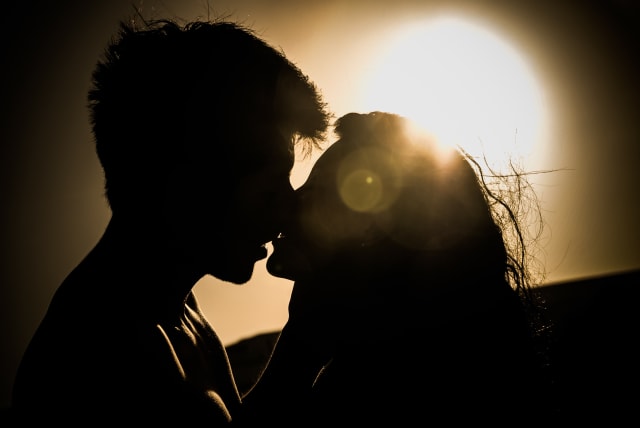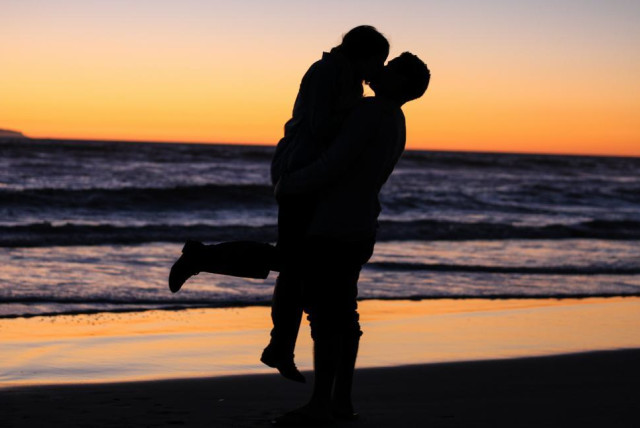Humanity’s earliest recorded kiss occurred in Mesopotamia 4,500 years ago - study

Two types of kissing are generally differentiated, namely the friendly-parental kiss and the romantic-sexual kiss.
When did ancient humans start to practice kissing others on the lips? It wasn’t always here, but now, written sources document that kissing was practiced by the peoples of the ancient Middle East – Mesopotamia, which is modern-day Iraq and Syria – 4,500 years ago.
This stands in the face of claims that the earliest evidence of human lip kissing originated in a very specific geographical location in South Asia 3,500 years ago from where it may have spread to other regions and caused the spread of the herpes simplex virus 1. Advocates of that view said the first known record of human romantic-sexual kissing originated in a Bronze Age manuscript deriving from South Asia (India), tentatively dated to 1500 BCE.
Researchers at the University of Copenhagen in Denmark and the University of Oxford in the UK have now published a study in the prestigious journal Science under the title “The ancient history of kissing: Sources from Mesopotamia contextualize the emergence of kissing and its role in disease transmission.”
In the research, two types of kissing are generally differentiated, namely the friendly-parental kiss and the romantic-sexual kiss. Whereas friendly-parental kissing appears to be ubiquitous among humans across time and geography, romantic-sexual kissing is not culturally universal, and it is dominant in stratified societies.
Dr. Troels Pank Arbøll and Dr. Sophie Lund Rasmussen, who studied cuneiform script on clay tablets, discovered that the earliest documentation for kissing could be moved back 1,000 years compared to what was previously acknowledged in the scientific community.
Many thousands of clay tablets have survived to this day, and they contain clear examples that kissing was considered a part of romantic intimacy in ancient times, "just as kissing could be part of friendships and family members’ relations,” said Arbøll, an expert on the history of medicine in Mesopotamia, which is modern-day Iraq and Syria between the Euphrates and Tigris Rivers.
There are relatively few instances in cuneiform writing in which romantic-sexual kissing is described but there were clear examples illustrating that kissing was considered an ordinary part of romantic intimacy in ancient times. The texts, the authors wrote, “imply that kissing was something that married couples did, though the kiss was regarded as part of an unmarried person’s sexual desire when in love.
"Two texts from about 1800 BCE are especially revealing. One describes how a married woman was almost led astray by a kiss from another man, and the other describes an unmarried woman swearing to avoid kissing and having sexual relations with a specific man. Apparently, society tried to regulate such activities between unwed people or adulterers. Furthermore, the sexual aspect of kissing was frowned upon in public, and kissing a person who was not meant to be sexually active, such as a priestess, was believed to deprive the kisser of the ability to speak.”
"Therefore, kissing should not be regarded as a custom that originated exclusively in any single region and spread from there but rather appears to have been practiced in multiple ancient cultures over several millennia," they wrote.
Dr. Sophie Lund Rasmussen, a biologist, added that “in fact, research into bonobos and chimpanzees – the closest living relatives to humans – has shown that both species engage in kissing, which may suggest that the practice of kissing is a fundamental behavior in humans, explaining why it can be found across cultures.”
Kissing maybe played a role unintentionally in microorganism transmissions
In addition to its importance for social and sexual behavior, kissing may have played an unintentional role in the transmission of microorganisms, potentially causing viruses to spread among humans, the authors suggested. Yet, the suggestion that the kiss may be regarded as a sudden biological trigger behind the spread of particular pathogens is more doubtful.
“There is a substantial corpus of medical texts from Mesopotamia, some of which mention a disease with symptoms reminiscent of the herpes simplex virus 1,” said Arbøll, who is an Assyriologist. “Ancient medical texts were influenced by a variety of cultural and religious concepts, and it therefore must be emphasized that they cannot be read at face value.”
It was nevertheless interesting, he noted, “that some similarities between the disease known as buʾshanu in ancient medical texts from Mesopotamia and the symptoms caused by herpes simplex infections. This disease was located primarily in or around the mouth and throat, and symptoms included vesicles in or around the mouth, which is one of the dominant signs of herpes infection."
Rasmussen added that "if the practice of kissing was widespread and well-established in a range of ancient societies, the effects of kissing in terms of pathogen transmission must likely have been more or less constant.”
The researchers concluded that future results emerging from research into ancient DNA, inevitably leading to discussions about complex historical developments and social interactions like kissing as a driver of early disease transmission will benefit from an interdisciplinary approach.
Jerusalem Post Store
`; document.getElementById("linkPremium").innerHTML = cont; var divWithLink = document.getElementById("premium-link"); if (divWithLink !== null && divWithLink !== 'undefined') { divWithLink.style.border = "solid 1px #cb0f3e"; divWithLink.style.textAlign = "center"; divWithLink.style.marginBottom = "15px"; divWithLink.style.marginTop = "15px"; divWithLink.style.width = "100%"; divWithLink.style.backgroundColor = "#122952"; divWithLink.style.color = "#ffffff"; divWithLink.style.lineHeight = "1.5"; } } (function (v, i) { });

